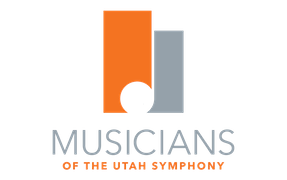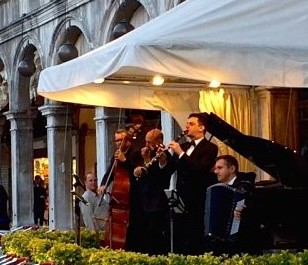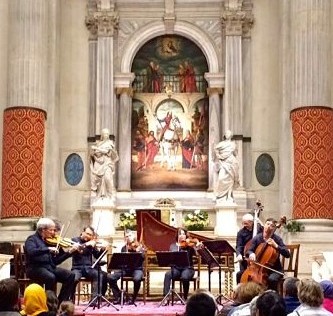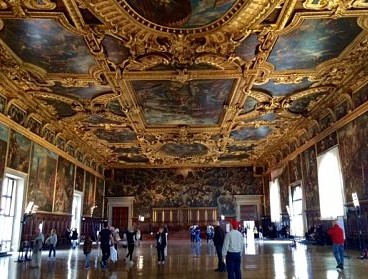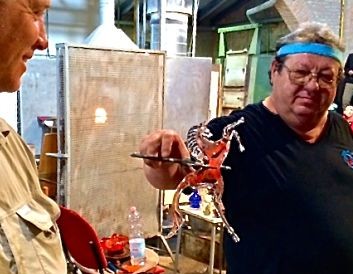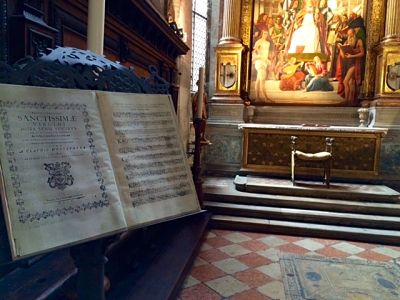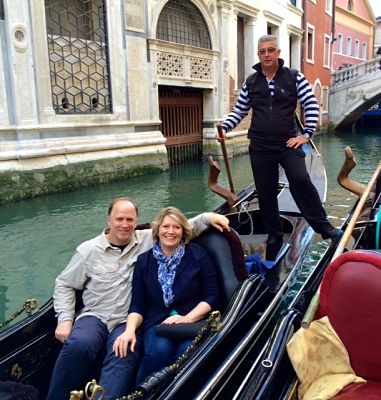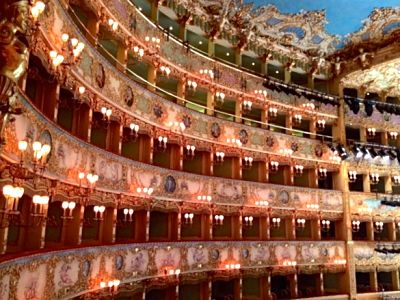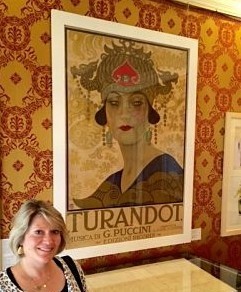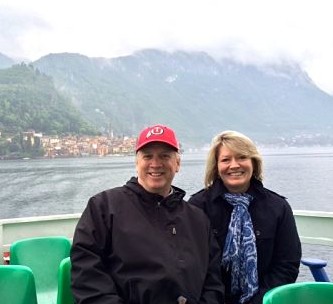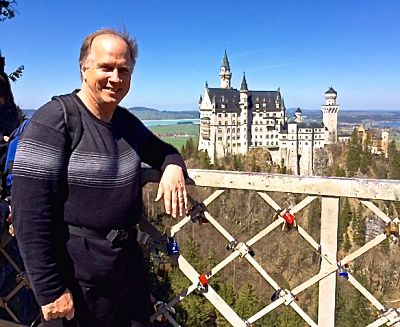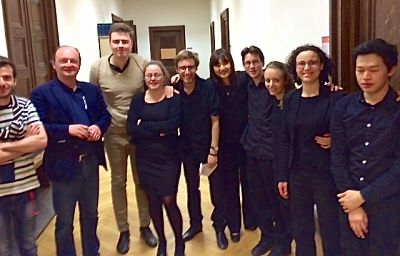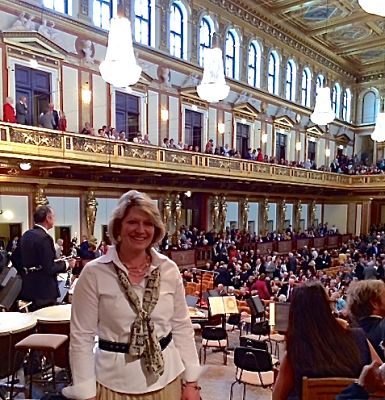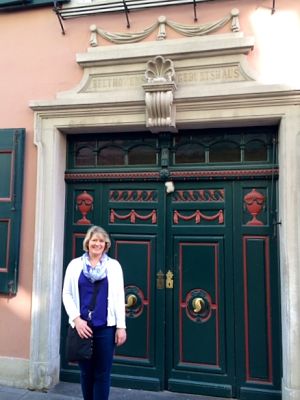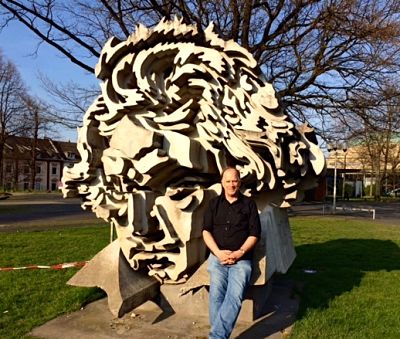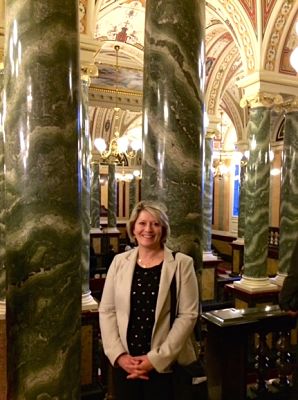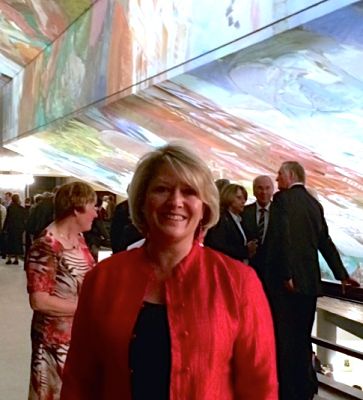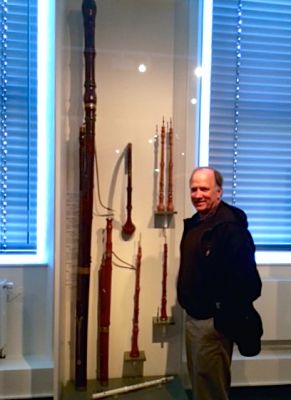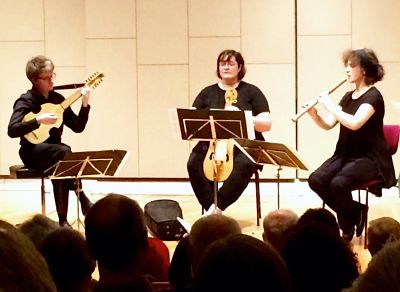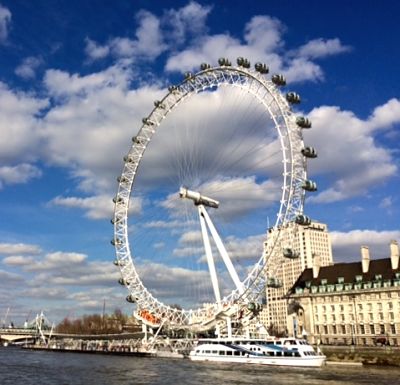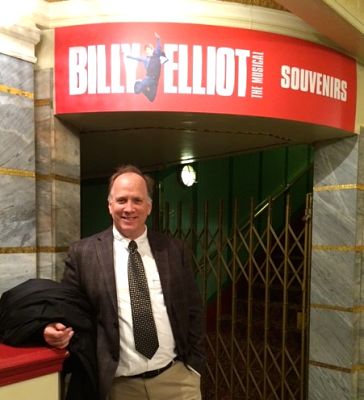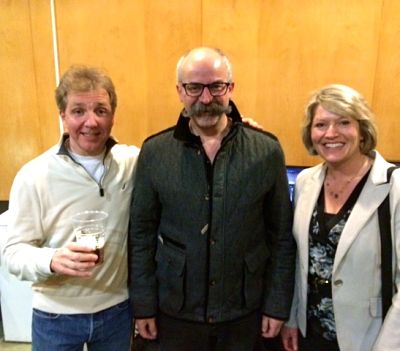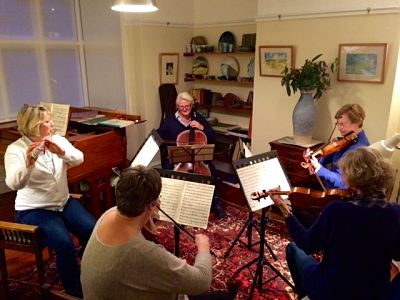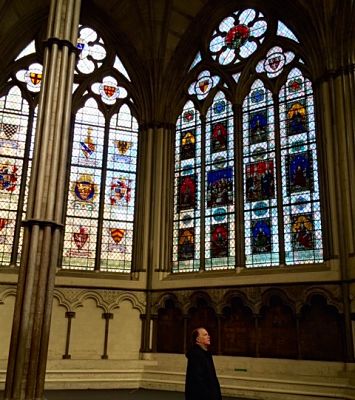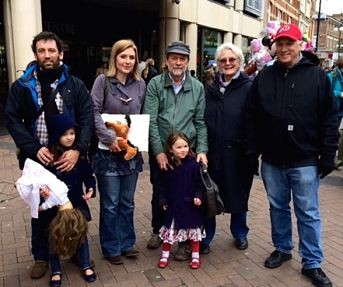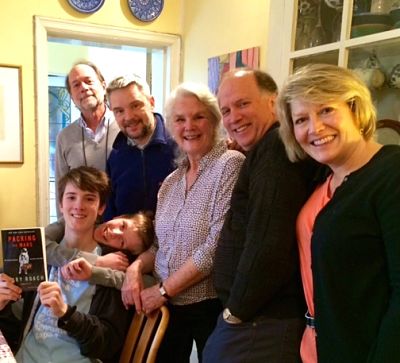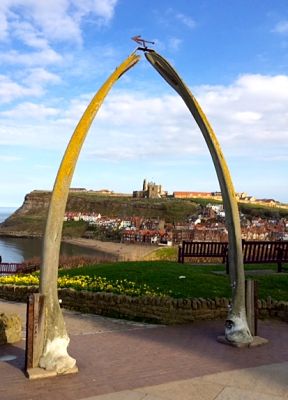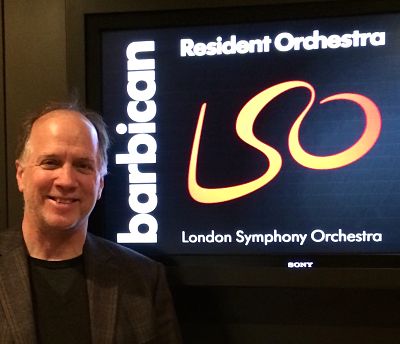Switzerland
Travel can take a lot of planning and be surprisingly taxing. On a spring day in May we left beautiful Lake Como for a different kind of beautiful, the Swiss Alps. This trip required a ferry to Menaggio, a hydrofoil to Como, a half-mile walk to the train station, a train to Arth-Goldau, a train to Lucerne, a train to Interlaken and finally a train to Lauterbrunnen. And this involves two countries that share a border! All those switches are a good reason to pack light because all those changes mean hauling (for us) two suitcases, two backpacks, a couple of ljackets, a purse and the “emergency gf food bag”.
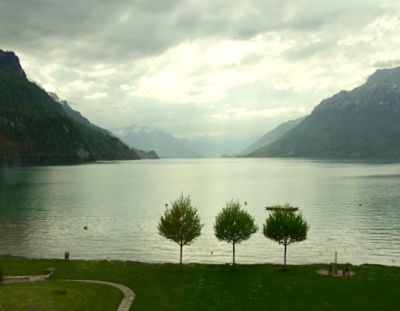
Scenic train trip into Switzerland
One of the things we first noticed heading towards Switzerland was the color of the water. There are a lot of lakes and rivers. The colors would best be described as teal, or sage, or aqua marine. It’s a sign that you’re heading to glacier territory. Though their numbers are diminishing, there are still many glaciers working their magic between the highest peaks of Europe. In different parts of Europe you might also notice the sounds of the birds. In both Italy and Switzerland the bird calls are like Italian baroque music with plenty of embellishment. It reminds me of the difference between “bye” and “arrivederci!”

Happy cows in Lauterbrunnen
Lauterbrunnen is a narrow valley sandwiched between monster mountains that shoot up vertically to the 12 and 13,000 foot level. It’s a popular place for base jumpers and para-gliders. We didn’t see any of the former but we saw a lot of the latter. We would often spot them twirling and swirling to one of several landing spots in Lauterbrunnen and neighboring Interlaken. Small gatherings of cows with bells are common. This resulted in Lisa singing parts of Mahler’s 1st symphony for a couple of hours! Hay is gathered in giant marshmallow shaped coverings and there are huge fields of dandelions. A narrow, though fast-rushing river streams down the valley and from our hotel balcony we can count four waterfalls. Snow is still on most of the mountain peaks and has even fallen on the day of our arrival. This is part of the trip where we’re glad to have a coat!

Bobsledding at Schilthorn
The local cuisine is hearty. There is plenty of dairy, cheese, meat and potatoes. A local dish called “rosti” is so popular with Lisa, she ordered it five times in five days! We dine at a couple of restaurants high in the Alps and I wonder, “Is there a reason why this should taste better at 10 or 11,000 feet?” Maybe it’s the hiking involved to get there. Of course the scenery is amazing! The air is clear, and from atop Jung-Frau and Shilthorn, where they filmed most of the 007 movie “On Her Majesty’s Secret Service”, you can see Italy and Germany. We took time to take pictures with James Bond and check out the obligatory collection of Swiss watches. The watches are pricey, but I needed a Swiss Army knife, so I got that instead.
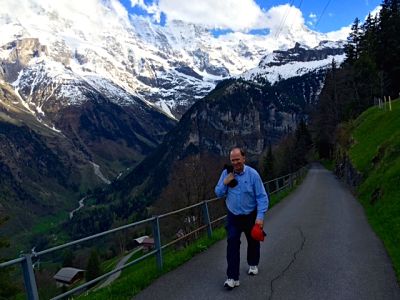
Hiking to Murren
We’re in and on the Swiss Alps on the birthday of both Brahms and Tchaikovsky. Brahms was a true nature-lover and knew the Alps from his youth. His biographer, Jan Swafford, wrote “The melody for the finale of the C-minor symphony actually traces the shape of the Alps as Brahms viewed them during a hike.” I tried to see the melody, but I must have been on another trail! Mendelssohn was also a frequent visitor to the Alps, and the scenes from his watercolors that we saw in his home in Leipzig took on a little more meaning. With all these connections with classical music’s great composers, we are still reminded they were people too.
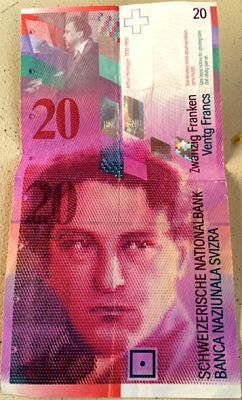
Honegger 20 Franc note
In Switzerland, the Euro is out and the Swiss franc is in. But who can complain when you see on the 20 franc note the face of composer Arthur Honegger! I hate to part with the bill, but that Swiss chocolate is calling. The language in Switzerland is not the German we have worked on knowing. You might hear German words, but the accent is more Gaelic. Somewhere back in time, the Scots and Irish no doubt settled in this area. They must have wanted a hiking challenge! We learn the important words (usually food related!) and the hotel staff is entertained.
We enjoyed a day taking a boat cruise on Brienz Lake by Interlaken. The views are gorgeous and we’re entertained by a couple of young fellows from Japan who “ooh” and “aah” at every new photo opportunity. The chalets all face the lake and make you wonder what life might be like living in such a place.
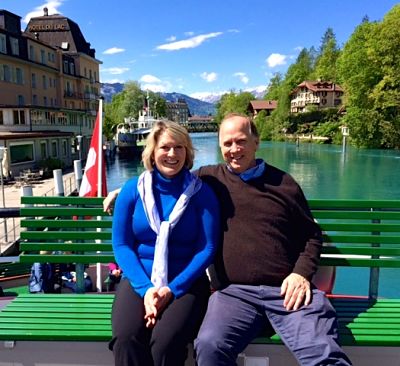
Boat ride at Interlaken – Lake Brienz
Waterfalls and the streams running down from the mountain tops give a sense of perpetual motion in Lauterbrunnen. Our walks take us over Lauibach, Staubbach, Geissbach and other “bachs”. This narrow swath of land has more bachs than Johann Sebastian and for someone who was a father 24 times, that’s a lot of streams! Some are so powerful you can understand the possible danger if caught in the rushing water. Like the edge of the peaks we frequent, we keep a healthy distance.
Getting to the top of the Alps usually involves a tram, a train or a funicular. One of the trains to “The Top of Europe” is so slow we quietly began chanting, “I think I can. I think I can…..” The tracks and lines are carefully maintained, so we were happy not to have to get out and push! They like to say that the alpine town of Murren is the birthplace of alpine skiing. It’s here where we enjoyed a curried rosti dinner while soaking in the view. But the restaurants in Lauterbrunnen and Murren come with furs or blankets for those sitting outdoors. At 11,000 feet we happily wore our jackets and the blankets provided by the restaurant at Hotel Alpenruh!

With Alain Moirandot and Randall Cook
We spent a day in Basel, one of the centers for Renaissance and Baroque music. One of it’s illustrious citizens is an old Curtis classmate, Randy Cook. In a former lifetime, Randy was a terrific oboist. He moved his focus to the baroque oboe and the gamba. He then began making baroque oboes. We spent several hours together enjoying the stories about his colorful career, trying one of his beautiful baroque oboes and hearing him play four different gambas. One dated back to 1550! We were drawn in to their unique voices. Randy’s longtime partner, Alain Moirandot, is one of Switzerland’s leading authorities on antique books and owns his own business. Their house has a great collection of art and old things. Alain happens to be a great cook, too. It was the first time I had ever eaten manta ray cheeks! Alain is also a great storyteller and with their guest, Christoph, we heard entertaining stories using several languages! Randy gave us a couple of CDs I know we’ll love hearing. It all made us wish we could stay longer.
My plans to meet Heinz Holliger fell through. Mr. Holliger lives in Basel and is probably the most famous oboist of the 20th century. His solo career was substantial and he is responsible for dozens of new works. He also composes, and it was for this reason that his secretary said he was out of town. It was a disappointment.
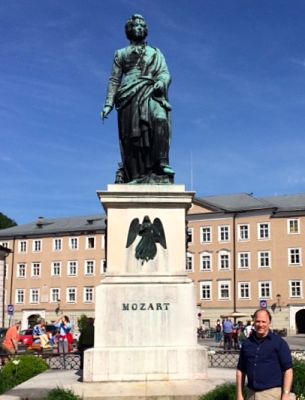
Mozartplatz in Salzburg
We enjoyed two days in Salzburg, birthplace of Wolfgang A. Mozart. Salzburg must be one of the most picturesque cities in the world. We climbed to the top of the Hohensalzburg Fortress and took advantage of a 360* view. From high above the city, we thought we could make out the spot where the nuns contemplated “How do you handle a problem like Maria” from the opening scene of “The Sound of Music”. The Alps framed one side of the city and green rolling hills were seen in all directions. From the fortress we could see the buildings Mozart called home through his teenage years. The fortress is site for a nightly concert featuring the Mozart Ensemble Salzburg. On this warm evening, we heard them play the Mendelssohn Quartet Op. 12, the Allegro from Mozart’s “”Eine Kleine Nachtmusik”, a Haydn piano concerto, a Dvorak Waltz and a couple of Strauss waltzes. The Mozart, Dvorak and Strauss were particularly good. The funicular got us down to Salzburg in a hurry. Our lodgings have features reminiscent of Mozart’s time, and the hardware on the bathroom door looks like it could keep out any intruder.
The two Mozart museums are really worth seeing. One is where he was born and lived for about eight years, and the other is where he lived before striking off on his own. About 1/3 of his life involved “being on the road”. Making the most of a child protege required a lot of travel. A map outlined the dozens of cities Mozart saw before his 18th birthday. It helped him learn several languages and that maybe bathing wasn’t such a bad idea! An original copy of his flute sonatas is on display. Not bad for someone who was 8 years old!
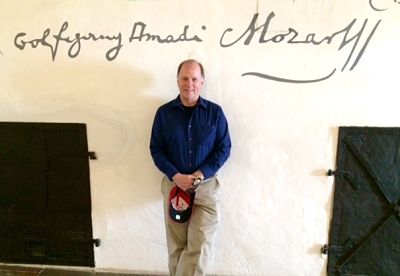
Mozart birth house
We took another boat ride. This time on the Salzach River. The tour guide pointed out a home lived in by Herbert van Karajan, famous conductor for much of the 20th century. At the end of the excursion, the captain played a Strauss waltz while the bow thrusters blew to the starboard and the stern thrusters blew to the port. This resulted in the big boat twirling around in circles. It was almost enough to make you dizzy!
Dinner was at a Greek restaurant close to the hotel. I mistook ouzo for water and nearly choked. Travel has it’s surprises. Next stop? Praque!
– Robert Stephenson and Lisa Byrnes
